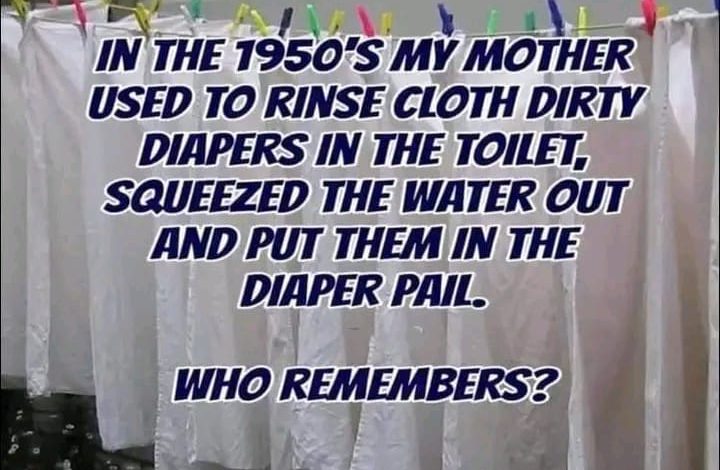
ADVERTISEMENT
The Evolution of Diapering: From Cloth to Convenience
Introduction
The image above serves as a nostalgic reminder of a time when parenting required more effort, patience, and hands-on labor. In the 1950s, disposable diapers were not widely available, and most mothers relied on reusable cloth diapers for their babies. Unlike today’s convenient disposable options, these diapers required constant washing, wringing, and drying. The process, though tedious, was a common household routine that many mothers took pride in. This article explores the evolution of diapering from traditional cloth diapers to modern disposable options, highlighting the dedication and resilience of past generations.
The Traditional Cloth Diapering Process
Before the invention of disposable diapers, mothers had no choice but to use cloth diapers, usually made of cotton or muslin. These diapers were highly absorbent but required regular cleaning. The typical process involved several steps:
- Rinsing the Dirty Diapers – Mothers would first rinse soiled diapers in the toilet, ensuring that most of the waste was removed before washing.
- Squeezing Out the Excess Water – After rinsing, they would manually squeeze out as much water as possible to make washing easier.
- Placing Them in a Diaper Pail – A designated diaper pail, often filled with water and mild detergent, was used to soak the soiled diapers before washing.
- Washing and Drying – Diapers were boiled, scrubbed by hand, or washed using wringer-style washing machines before being hung outside to dry in the sun.
Despite the labor-intensive process, many parents preferred cloth diapers for their durability and reusability. However, this method also had its drawbacks, including time consumption, frequent laundering, and exposure to unsanitary conditions.
The Shift to Disposable Diapers
As technology advanced, so did parenting methods. In 1948, Johnson & Johnson introduced the first mass-produced disposable diaper. However, it wasn’t until the 1960s and 1970s that disposable diapers became widely accessible and affordable. Parents quickly embraced the convenience they provided—no more washing, wringing, or drying!
By the 1980s, brands like Pampers and Huggies revolutionized the diapering industry with improved absorbency, leak protection, and disposable ease. This shift significantly reduced the workload for mothers, allowing them to focus on other responsibilities without the hassle of constantly washing cloth diapers.
ADVERTISEMENT
The Return of Cloth Diapers in Modern Times
Interestingly, in recent years, many parents have turned back to cloth diapering due to environmental concerns. With disposable diapers contributing to landfill waste, eco-conscious families are opting for reusable cloth alternatives. However, modern cloth diapers are vastly different from those used in the 1950s. Today’s cloth diapers come with waterproof covers, adjustable snaps, and inserts that make them more efficient and less messy. Additionally, advancements in washing machines and detergents have made cleaning much easier than in the past.
Conclusion
The image of cloth diapers drying on a line represents a time of dedication and resilience in parenting. While modern parents enjoy the convenience of disposable diapers, the hard work and sacrifices of past generations should never be forgotten. The evolution of diapering is a testament to how parenting has changed over time, adapting to advancements while also revisiting old methods for sustainability. Whether one chooses cloth or disposable diapers today, the goal remains the same—to provide the best care and comfort for babies.
As we look back on the past, we gain a deeper appreciation for the simple yet labor-intensive tasks that once defined daily life. Who remembers those days? Many do, and their stories continue to inspire the generations that follow.
ADVERTISEMENT




